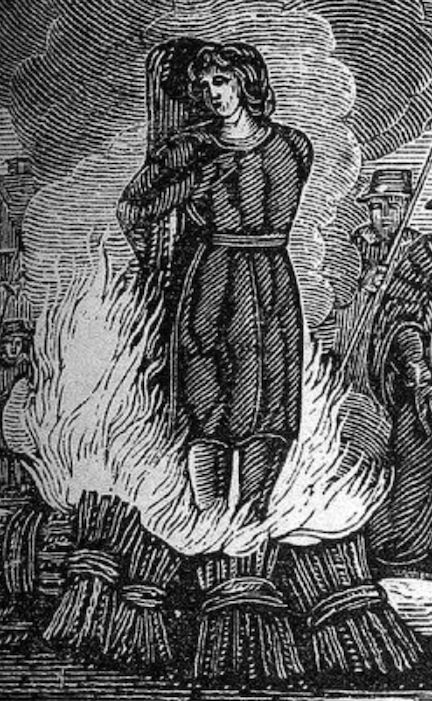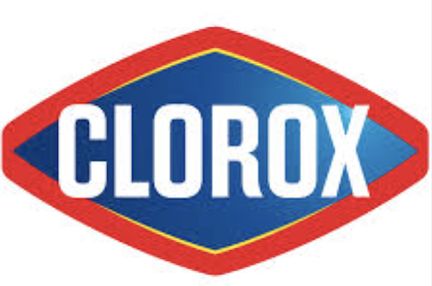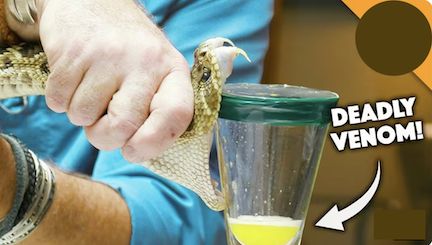Last Salem Witch Finally Pardoned
Fox News and the AP report:
A woman who was convicted of witchcraft in Salem, Massachusetts, finally has had her name cleared after more than three centuries.
Massachusetts lawmakers on Thursday legally pardoned Elizabeth Johnson Jr.
Johnson's conviction took place back in 1693 — and she was sentenced to death amid the Salem Witch Trials. Johnson is the final accused "witch" to be cleared, the Associated Press reported.
Wow, this was a pardon 300+ years in the making! And it took a bunch of middle school students to advocate on her behalf.
It turns out a group of 8th graders at North Andover Middle School in North Andover, Massachusetts, were studying the era when they discovered the last unpardoned “witch.” So they began researching ways to rectify the situation. The result was a piece of legislation which righted the wrong.
"We will never be able to change what happened to victims like Elizabeth but at the very least can set the record straight," Massachusetts Sen. Diana DiZoglio, who approved the bill to pardon Johnson, told the AP.

When sin signs, seals, and delivers our judgment, who will be our advocate? Who will leave the 99 to seek the one who needs rescuing and redemption, the last one left behind?
Jesus, that's who! It’s a pardon story, eternity in the making.
“My dear children, I write this to you so that you will not sin. But if anybody does sin, we have an advocate with the Father—Jesus Christ, the Righteous One” (1 John 2:1, NIV).
“Suppose one of you has a hundred sheep and loses one of them. Doesn’t he leave the ninety-nine in the open country and go after the lost sheep until he finds it?” (Luke 15:4, NIV).
Removing Stains
In a sermon delivered by the late, great Haddon Robinson, he spoke about the stain of sin and its remedy. While the exact text is not currently available, the following is inspired by various accounts of Robinson’s sermon entitled The Stain of Sin::
Consumer Reports magazine once published a booklet with an intriguing title: How to Clean Practically Anything. The book offered advice on which solvents work best for removing all kinds of stains. Since my clothes often get stained, I really appreciated that book.
Did you know that glycerin can remove ballpoint ink stains? Boiling water can take out berry stains. Parents with young children should keep a gallon of vinegar handy for crayon marks. Bleach works well on mildew. Lemon juice is effective for rust.
I haven’t tried all of these remedies myself, but I figure the experts tested them first.
What you won’t find in that book, however, is how to deal with the worst stains of all—the stains in your life caused by sin. These are the deep, ugly marks left by hostile words and shameful actions. Tears cannot wash them away. Determination cannot erase them. Sometimes we convince ourselves that as life goes on, our sins will simply fade away. Yet unexpectedly, those stains seep back into our lives.

Robinson concludes,
The Bible tells us what we truly need: 'And the blood of Jesus, His Son, purifies us from all sin' (1 John 1:7). That is the only powerful remedy.
Just as every stain requires the right solvent, every sin requires the only effective remedy—Jesus’ blood. We may try to “scrub” our lives with good works, willpower, or time, but none of those can remove the guilt and shame that sin leaves behind. Only Christ can wash us clean.
So when we feel weighed down by past mistakes or ongoing struggles, the application is simple but powerful: bring your stains to Him. Confess honestly, receive His forgiveness, and walk in the freedom of a cleansed heart.
Every day is an opportunity to live in that freedom—no longer defined by old stains, but by the purity and grace that Christ gives.
"Have mercy on me, O God, according to your unfailing love; according to your great compassion blot out my transgressions. Wash away all my iniquity and cleanse me from my sin" (Psalm 51:1-2, NIV).
One Man's Blood Is the Best Anti-venom for Snakes
The latest research (published on May 2, 2025, in the journal Cell Press) is showing great promise in the fight against the deadly effects of snake bites:
Scientists have developed what they believe is the most widely effective antivenom ever — and the secret ingredient came from one man’s blood.
In the course of their research, the team found a man, Tim Friede, who had been bitten hundreds of times by 16 species of deadly snakes — the poison lethal enough to kill a horse, according to the scientists — over an 18-year period.

It turns out Friede was intentionally subjecting himself to the snake bites (over 200 of them!) and venom (over 700 doses!) in order to self-immunize against the deadly effects. He would start with very small doses, so as not to produce a fatal response, then gradually increase the exposure so his body could adjust to the poison over time. The result was a sort of "hyper-immunity" which makes him virtually impervious to a wide range of venomous toxins.
Now, rich in anti-venom antibodies, components from his blood are being developed into a very broad based antitode to combat the toxic effects of snake bites in others who have been bitten.
Don't bellieve it? Here's a link to his YouTube channel with plently of "sssssss"cary videos.
This might be a reasonable and, frankly, successful approach when it comes to literal snake venom, but the principle hardly carries over to the spiritual realm where we have been told that our most sinister enemy is "that ancient serpent called the devil, or Satan, who leads the whole world astray" (Revelation 12:9, NIV).
From the moment of the Fall of Man in the Garden of Eden, we've had a snake, errrrr a sin problem. But with the sin came the promise:
"And I will put enmity between you [Satan] and the woman, and between your offspring and hers; he [Jesus] will crush your head, and you will strike his heel” (Genesis 3:15, NIV).
And that promise came through the shed blood of Jesus on the cross. "In fact, the law requires that nearly everything be cleansed with blood, and without the shedding of blood there is no forgiveness" (Hebrews 9:22, NIV).
Some erroneously think that they can withstand the toxitcity of a life lived in sin and rebellion, engaging in ever increasing exposure to the trappings of this world and all its influence. But in the spiritual realm, you never "adjust to the poison," and the continued exposure doesn't produce "hyper-immunity" ... it only produces death!
Indeed, though, there is ONE MAN who can provide the "hyper-immunity" required to both resist and triumph over the toxic influence of that great serpent, Satan. But that man is NOT Tim Friede; that Man is the Lord Jesus Christ!